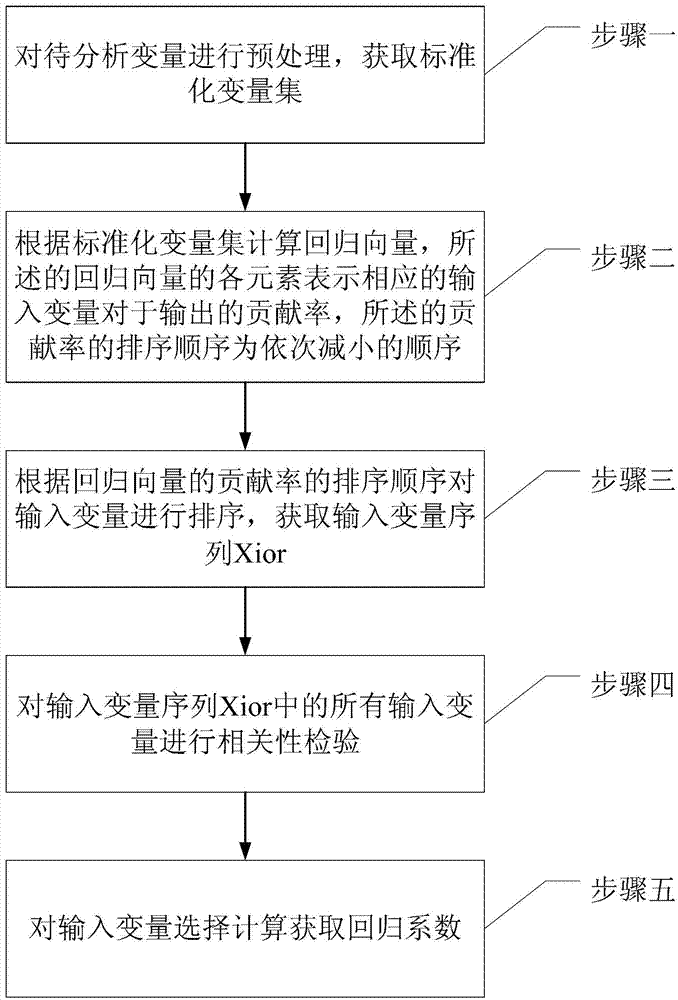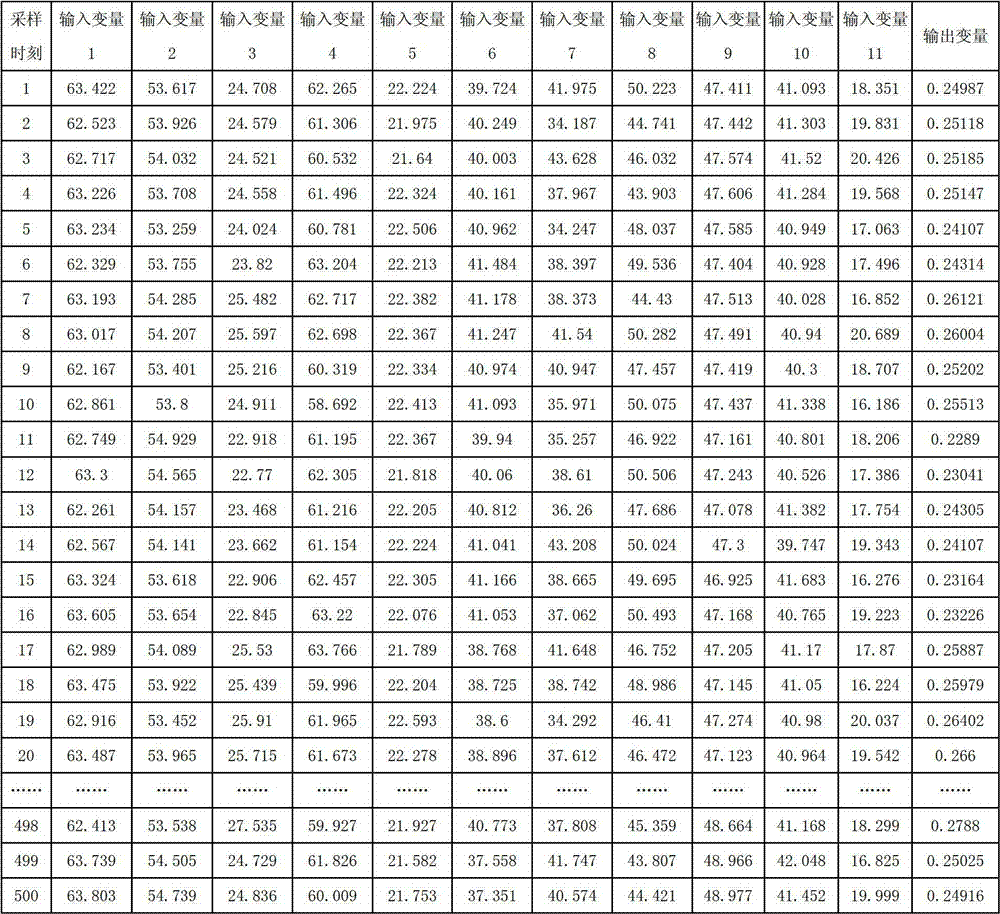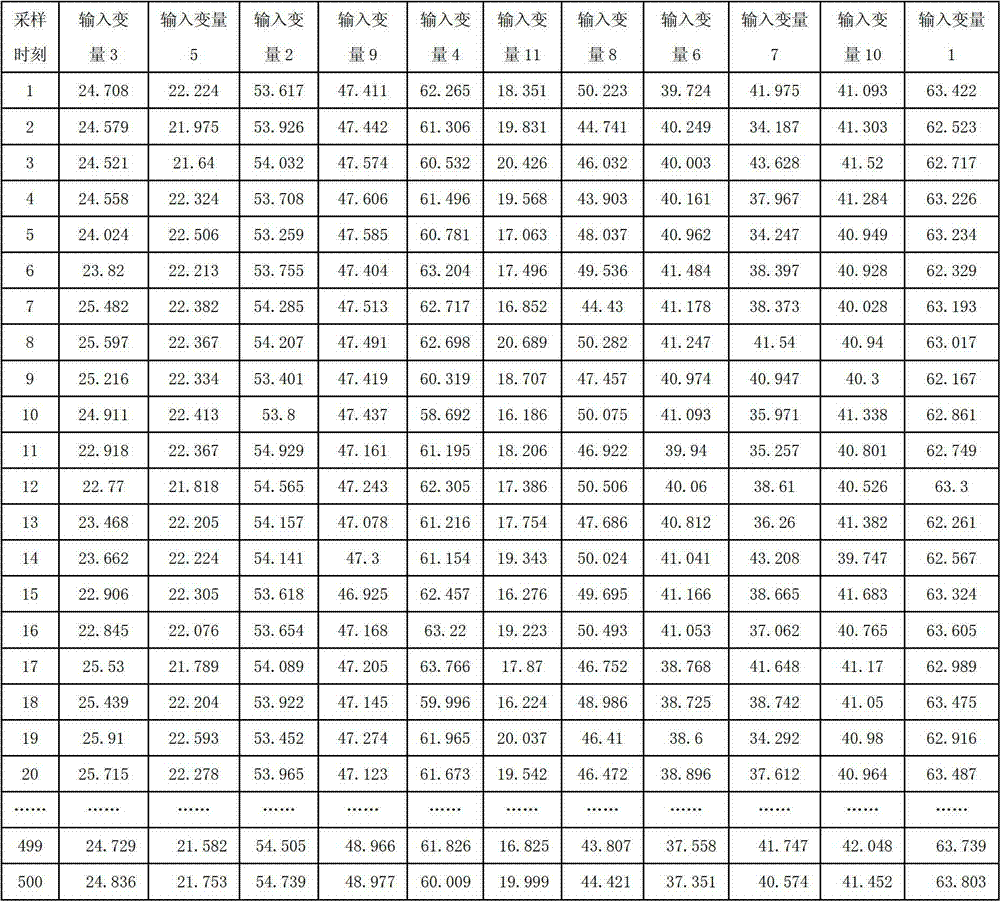Variable selection method based on partial least square
A technique of partial least squares and variable selection, applied in the field of selection, which can solve problems such as poor forecasting ability and inability to improve forecasting performance.
- Summary
- Abstract
- Description
- Claims
- Application Information
AI Technical Summary
Problems solved by technology
Method used
Image
Examples
specific Embodiment approach 1
[0014] Specific implementation mode one, combination figure 1 To describe this embodiment in detail, the variable selection method based on partial least squares described in this embodiment includes the following steps:
[0015] Step 1: Preprocess the variables to be analyzed to obtain a standardized variable set;
[0016] Step 2: Calculate the regression vector according to the standardized variable set, each element of the regression vector represents the contribution rate of the corresponding input variable to the output, and the sort order of the contribution rate is the order of decreasing order;
[0017] Step 3: Sort the input variables according to the sort order of the contribution rate of the regression vector to obtain the input variable sequence Xior;
[0018] Step 4: Perform correlation test on all input variables in the input variable sequence Xior;
[0019] Step 5. Select and calculate the input variables to obtain regression coefficients.
specific Embodiment approach 2
[0020] The second embodiment is different from the partial least squares-based variable selection method described in the first embodiment in that the specific process of preprocessing the variables to be analyzed in step one to obtain the standardized variable set is:
[0021] The set of variables to be analyzed constitutes the variable set X, initializes the variable set X, removes the outliers of the variable set X according to the normalization process to obtain a standardized variable set, the standardized variable set is a standardized variable set with a mean value of 0 and a variance of 1. .
[0022] This embodiment ensures the effectiveness of the analysis by preprocessing the variables to be analyzed.
specific Embodiment approach 3
[0023] Embodiment 3 The difference between this embodiment and the variable selection method based on partial least squares described in the first embodiment is that the specific process of calculating the regression vector according to the standardized variable set described in step 2 is:
[0024] The input variables have large redundancy and autocorrelation, which is not conducive to subsequent analysis and processing. According to the leave-one-out cross-check method, determine the number of potential variables in the standardized variable set nlv,
[0025] The number of latent variables nlv is then based on the improved deviation least squares regression method to obtain the regression vector b, each element of which represents the contribution rate of the corresponding input variable to the output.
[0026] The improved deviation least squares regression method described in this embodiment can ensure the stability of digital calculation and increase the calculation speed.
PUM
 Login to View More
Login to View More Abstract
Description
Claims
Application Information
 Login to View More
Login to View More - R&D
- Intellectual Property
- Life Sciences
- Materials
- Tech Scout
- Unparalleled Data Quality
- Higher Quality Content
- 60% Fewer Hallucinations
Browse by: Latest US Patents, China's latest patents, Technical Efficacy Thesaurus, Application Domain, Technology Topic, Popular Technical Reports.
© 2025 PatSnap. All rights reserved.Legal|Privacy policy|Modern Slavery Act Transparency Statement|Sitemap|About US| Contact US: help@patsnap.com



